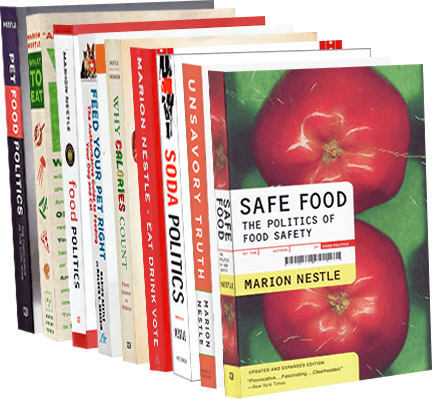Food safety: it’s déjà vu all over again
In preparation for the holiday season, Secretary of Health and Human Services Kathleen Sebelius and Agriculture Secretary Thomas Vilsack held a press conference to promote the departments’ efforts on food safety.
They announced release of the administration’s progress report from its Food Safety Working Group.
They also highlighted additional places to get government information about food safety at home:
I didn’t pay much attention to these announcements until I read the slightly snarky account in Food Chemical News (December 22).
The Obama administration patted itself on the back today with a new report that both lists the accomplishments over the past three years of its Food Safety Working Group (FSWG) and identifies the group’s top priorities for the coming year.
Released just minutes before a short media call that served as more of a pep rally, The Federal Food Safety Working Group Progress Report, a 31-page document, summarizes for stakeholders a host of activities that have taken place at government agencies over the past three years related to detecting foodborne pathogens, enhancing surveillance, responding to food safety problems, improving food safety at the retail level and educating consumers.
The list of the administration’s food safety accomplishments is long and detailed, and many are impressive.
But what the report does not say is telling. Neither the USDA nor FDA have the resources or power to require the industries they supposedly regulate to produce safe food.
As Mark Bittman explains in his Opinionator column in the New York Times, politics defeats even the most rational and thoroughly science-based safety measures, leaving the FDA unable to do much more than politely request “voluntary guidance” of industry.
Bittman focuses on the political barriers to doing what the FDA has been asking for since 1977: a ban on the use of antibiotics for non-therapeutic purposes, in this case to make food animals grow faster. The result: “Bacteria 1, FDA 0.”
Here’s the nut: The F.D.A. has no money to spare, but the corporations that control the food industry have all they need, along with the political power it buys.
That’s why we can say this without equivocation: public health, the quality of our food, and animal welfare are all sacrificed to the profits that can be made by raising animals in factories….Animals move from farm to refrigerator case in record time; banning prophylactic drugs would slow this process down, and with it the meat industry’s rate of profit.
Lawmakers beholden to corporate money are not about to let that happen, at least not without a fight.
For more than 20 years, the Government Accountability Office has called for creation of a single food safety agency that unites the safety oversight functions of the FDA and USDA and has the authority to require food to be produced safely.
In this Congress? Hopeless.
But Congress can be changed—and that’s a worthy thought for the new year.


